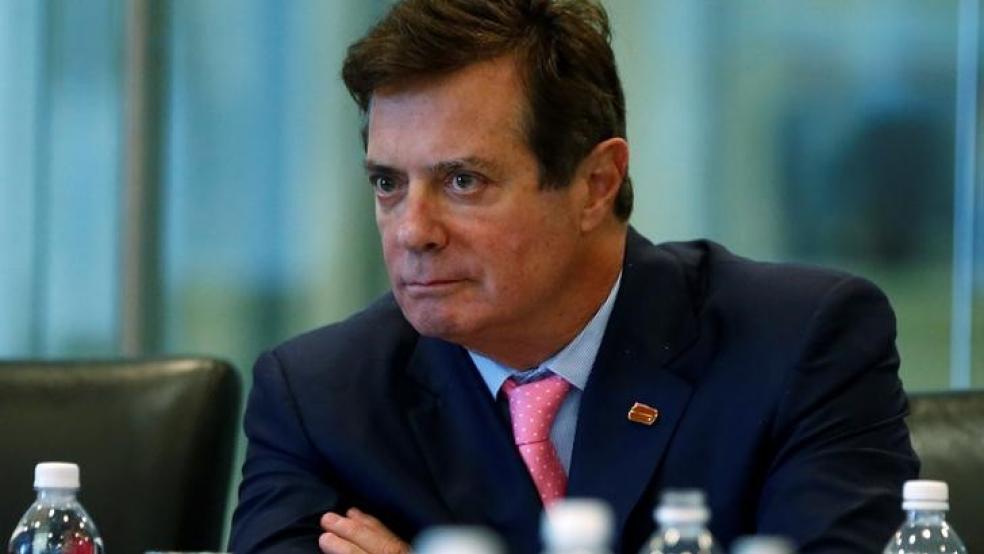With the announcement that Paul Manafort has resigned as Donald Trump’s campaign manager, and that his chief aide Rick Gates has decamped along with him, it’s becoming increasingly difficult to view the operation run out of Trump Tower as an actual political campaign.
Manafort, who was brought in to professionalize the campaign several months ago, displacing former campaign manager Corey Lewandowski, has been hammered by revelations of his work for Kremlin-friendly politicians in Ukraine and by the possibility that his work for them inside the United States violated federal law.
Related: Trump’s First Campaign Ad Strikes a Dark, Familiar Tone
But Manafort might not have been long for the Trump campaign regardless of any ties to Ukraine or the Russians. The effort to turn Trump into a conventional candidate, with a few exceptions, never really took. Trump would give a prepared speech one night, leading to speculation that the “pivot” had finally arrived, only to fly off the handle a day later with personal attacks on someone who offended him. Finally, the campaign announced earlier this week that pollster Kellyanne Conway had been brought in as campaign manager and that Breitbart News chairman Steve Bannon has been hired as the new campaign CEO.
Though the campaign tried to call the move an “expansion” of the campaign rather than a demotion of Manafort, the spin was laughed off by most of the political press and sure enough, by Friday morning Manafort was on his way out the door.
“This morning Paul Manafort offered, and I accepted, his resignation from the campaign,” Trump said in a statement. “I am very appreciative for his great work in helping to get us where we are today, and in particular, his work guiding us through the delegate and convention process. Paul is a true professional, and I wish him the greatest success.”
So with Manafort gone, what’s left?
Related: Hillary Clinton’s New Motto: Let Trump Be Trump
Conway is a political professional, but she has never run a presidential campaign before. Bannon isn’t a campaign guy at all. He’s a former investment banker who took over Breitbart News after founder Andrew Breitbart died in 2012 and turned it into a refuge for white ethno-nationalists like Milo Yiannopoulos and, ultimately, into an arm of the Trump campaign.
And if the Trump operation doesn’t look like a real campaign in its leadership, it doesn’t look like one on the campaign trail, either.
The Trump website lists five upcoming events, and where it’s sending the candidate is striking, given the status of the race. Trump is currently behind in the polls nationally and in swing states. He needs to carry states like Pennsylvania, Ohio, New Hampshire, and Florida to have even a prayer of winning the White House. But except for a single stop in Ohio Monday evening, Trump will spend the rest of the week in states where his appearance isn’t likely to move the needle at all.
He will be in Michigan on Friday evening, and has a rally in Fredericksburg, Virginia, on Saturday. Michigan hasn’t voted for a Republican for president since 1988 and Clinton is leading him there by an average margin of 7.3 percentage points, with the last two polls both showing a 10-point Clinton advantage. Virginia may have been a swing state a decade ago, but it went solidly for Obama in 2008 and 2012 and the Clinton campaign is currently so confident there that it has pulled money and resources out of the state to focus on closer contests.
Related: The Trump-Seinfeld Connection Goes Back Further Than You Think
Next week, after he leaves Ohio, Trump will visit Texas on Tuesday and Mississippi on Wednesday. A Democrat hasn’t won a presidential vote in either of those two states since the 1970s. If Trump were in trouble in either Texas or Mississippi, it would be the sign of a wipeout so epic that it would threaten to outdo Ronald Reagan’s 49-state thrashing of Walter Mondale in 1984.
But he isn’t currently in danger in Texas and Mississippi. Polling averages show both states are safely within Trump’s cap and aren’t likely to flip to Clinton.
This simply isn’t normal behavior for a presidential campaign that is actually trying to win an election. And that makes you wonder what, exactly, Trump is actually trying to do.





